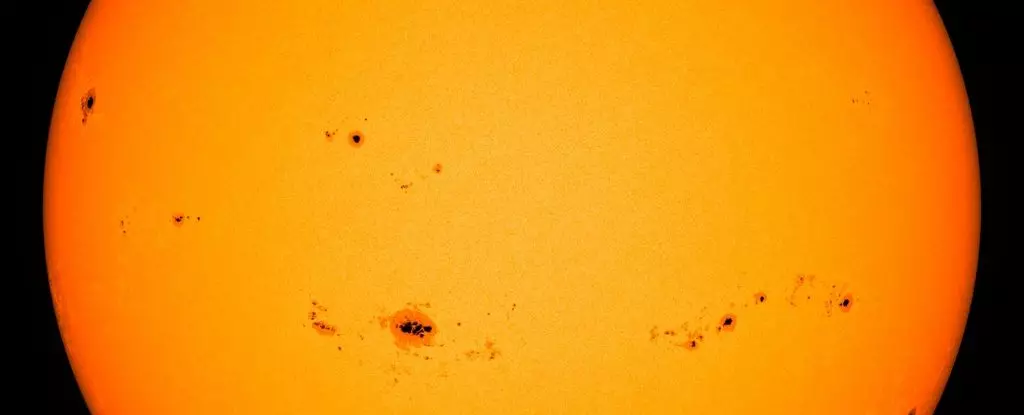The cosmos does not cease to amaze us, and this year it brings significant news from NASA, the National Oceanic and Atmospheric Administration (NOAA), and the Solar Cycle Prediction Panel. They have officially acknowledged that we are now experiencing solar maximum, the climactic apex of the Sun’s approximately 11-year activity cycle. Understanding what solar maximum entails is essential for grasping the implications it holds for our technology, environment, and even daily lives here on Earth.
At solar maximum, the Sun showcases increased activity characterized by a proliferation of sunspots, solar flares, and coronal mass ejections (CMEs). Sunspots are temporary phenomena on the Sun’s surface where the magnetic field is particularly strong and turbulent, leading to decreased surface temperature in those areas. When we look at the surface of the Sun during this period, it may be likened to freckles on a sun-kissed face—an indication that solar activity is thriving. As the cycle progresses toward its minimum, we will observe a gradual decrease in these solar manifestations, but predicting the precise timing of these phases is an intricate task.
Understanding the magnitude and timing of solar cycles has always perplexed scientists. As meteorologist Elsayed Talaat notes, while we can confirm that we are in solar maximum, identifying when peak solar activity occurs can elude even the experts for months, if not years. Therefore, this phase represents not just fluctuations in solar behavior, but also ongoing exploration in the fields of astrophysics and heliophysics.
The fundamental drivers of solar cycles remain ambiguous. According to solar astrophysicist Michael Wheatland, comprehending the internal dynamics of the Sun is an enduring challenge in the scientific community. While scientists can recognize and track the various phenomena associated with solar activity, the unpredictability of these cycles can complicate their efforts. Each solar cycle’s length and intensity can differ significantly, making it difficult to forecast their behavior accurately.
For the public, the technicalities of solar activity might feel remote, yet the effects can materialize in ways that affect daily life. Increased solar activity can produce solar flares that disrupt radio communications and lead to satellite operational difficulties. Understanding these disruptions is vital for industries that rely on such technologies.
The phenomenon of solar flares is just one component of the broader implications of active solar cycles. In addition to radio blackouts, coronal mass ejections pose a particular risk. When these massive bursts of solar wind and magnetic fields collide with Earth’s magnetic shield, they can induce geomagnetic storms.
These storms can have considerable ramifications: they may induce currents in power lines leading to potential blackouts, disrupt global positioning systems, and occasionally cause disruptions to various communication systems. Despite these risks, geomagnetic storms also present a silver lining—spectacular auroras illuminate the night sky when solar particles interact with the Earth’s atmosphere, offering a stunning display of nature’s beauty.
As we journey through this current solar maximum, it’s noteworthy that while it appears more potent than many initial forecasts predicted, it is still within the bounds of ‘normal’ solar activity. The numerical representation of these outbursts, such as the recent X9.0 flare, positions this cycle among the most significant but does not inevitably point toward catastrophic implications.
As we move deeper into this solar cycle, interesting questions arise regarding the evolution of our understanding of solar dynamics. The discrepancies between anticipated and actual solar activity suggest that we may need to reassess the models we utilize in predictions. Improved accuracy in forecasting could foster better preparation and mitigation strategies for potential disruptions.
As we delve into the heart of solar maximum, we find ourselves at both a crossroads and an opportunity. The heightened activity presents challenges to our technological systems, yet it also provides a rich avenue for exploration into the magnificent complexities of our nearest star. The wonders of space weather enable us to not only better understand the universe but also to appreciate the intricate and often tempestuous relationship between our Earth and the celestial realm. As scientists gather new insights, they pave the way for future advancements in solar cycle prediction, ensuring that humanity remains resilient in the face of cosmic unpredictability.

